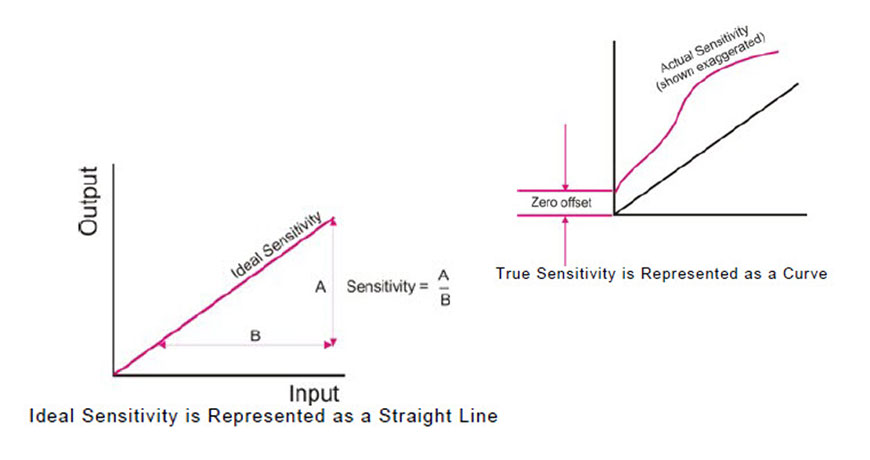Primarily, there are three types of sensors in use today:
- Velocity transducer
- Accelerometer
- Proximity probe
Each has its own sensitivity, which simply means that for a given input you get a given output.

Velocity Transducer
Simply a suspended magnet inside an electrical coil. The coil is affixed to the machine housing and moves with the housing, whereas the magnet attempts to remain stationary within that coil, thereby generating voltage. This sensor generally has an output of 1.0 volts per inch per second.
Accelerometer
Usually made up of a Piezoelectric Crystal preloaded with an amplifier, and, as the sensor housing moves due to vibration, the crystal is compressed and released, creating an output that for a standard sensor is 0.100 volts/g or 100 mv/g. Most accelerometers have a total voltage output of 5 volts or 5000 mv. With this sensitivity, if you take 5000 mv divided by 100 mv/g this gives you a range of 50 g’s peak.
Proximity Probe
Commonly called a prox probe. This sensor has a probe that is mounted through a journal or babbitt bearing and measures the movement of the shaft relative to the bearing. These sensors consist of the probe which has a magnetic coil in the tip that produces an eddy current when charged; this is connected to an extension cable which is connected to the proximiter. The proximiter is what powers the probe and supplies a signal to be monitored. The length of the probe cable and the extension cable determine the sensitivity. These are powered by a DC power source which creates the magnetic field at the probe tip. The probes are calibrated for specific shaft materials such as AISI 4140 steel, a low alloy steel containing chromium, molybdenum, and manganese which is widely used for shaft construction for rotating equipment; other types of materials are also used. When purchasing proximity probe systems you need to tell the supplier what the shaft material is so the probes can be properly calibrated. When installed, the static distance between the probe tip and the shaft surface is measured by measuring the DC voltage or Gap Volts; the movement or vibration of the shaft is a measurement of the changing or modulating of the DC—think of the gap volts as a DC signal and the vibration as an AC signal riding on the DC. The most common sensitivity of proximity probes is 0.200 v/mil, so for every 0.001 in. the shaft moves the voltage would change by 200 millivolts.
Take a look at our vibration analysis tools and how they interface with velocity transducers, accelerometers, and proximity probes.
Filed under:
Vibration Analysis by Gary James CRL
